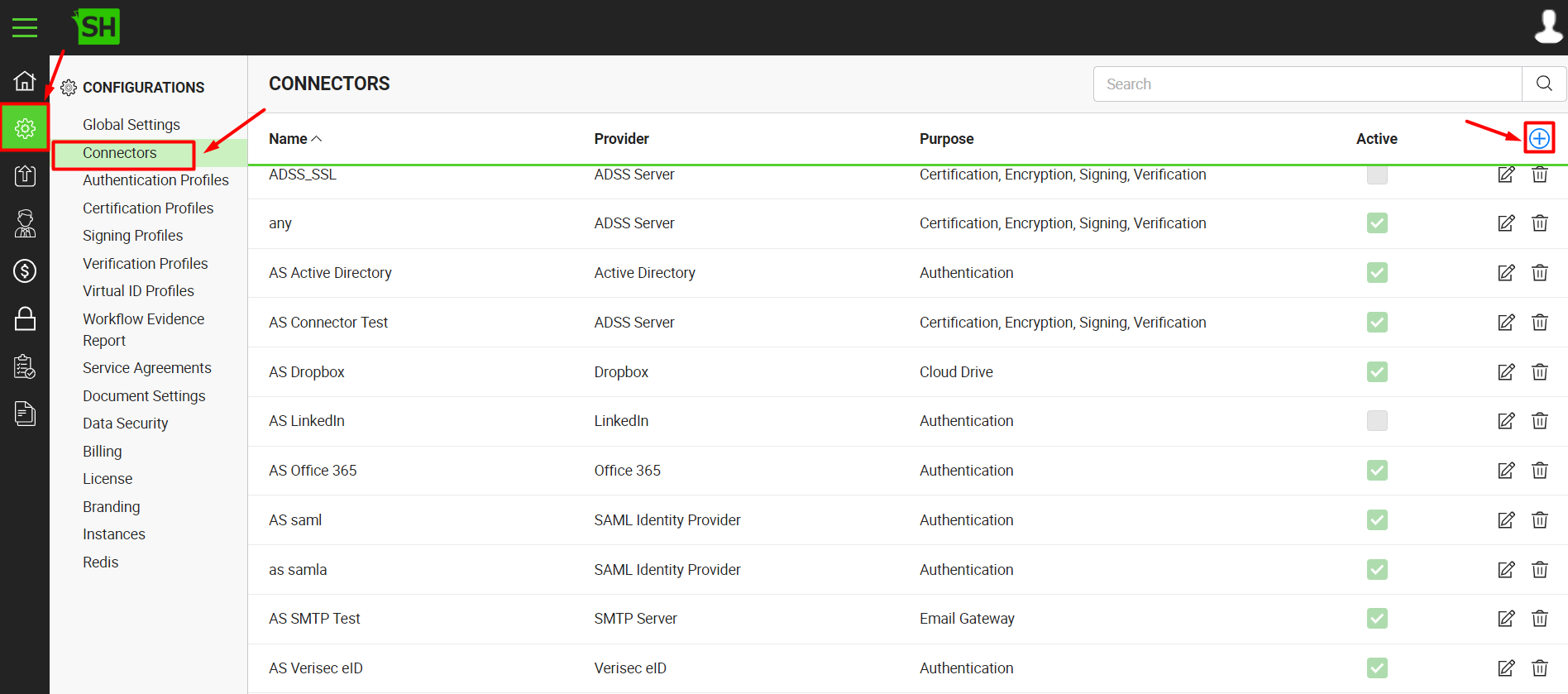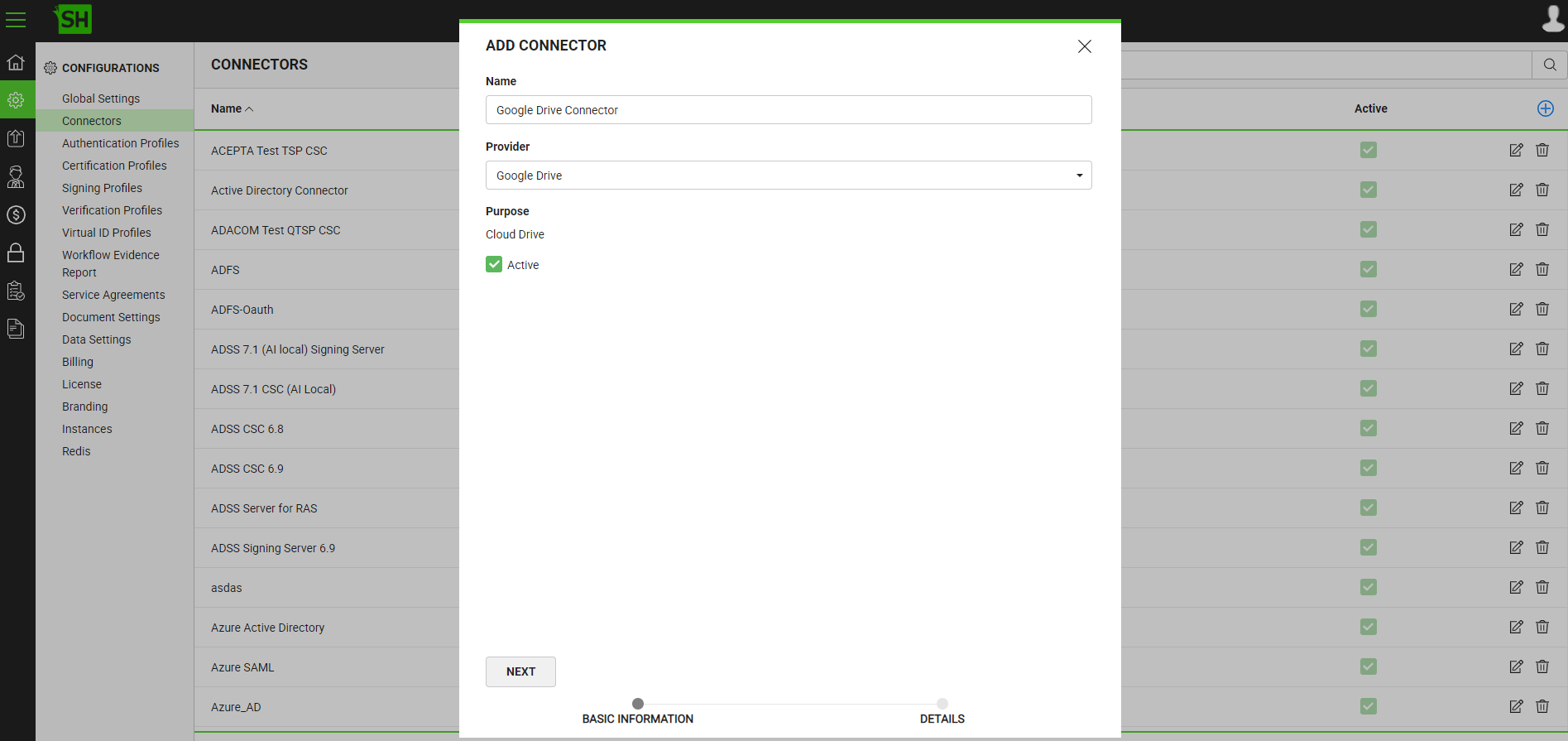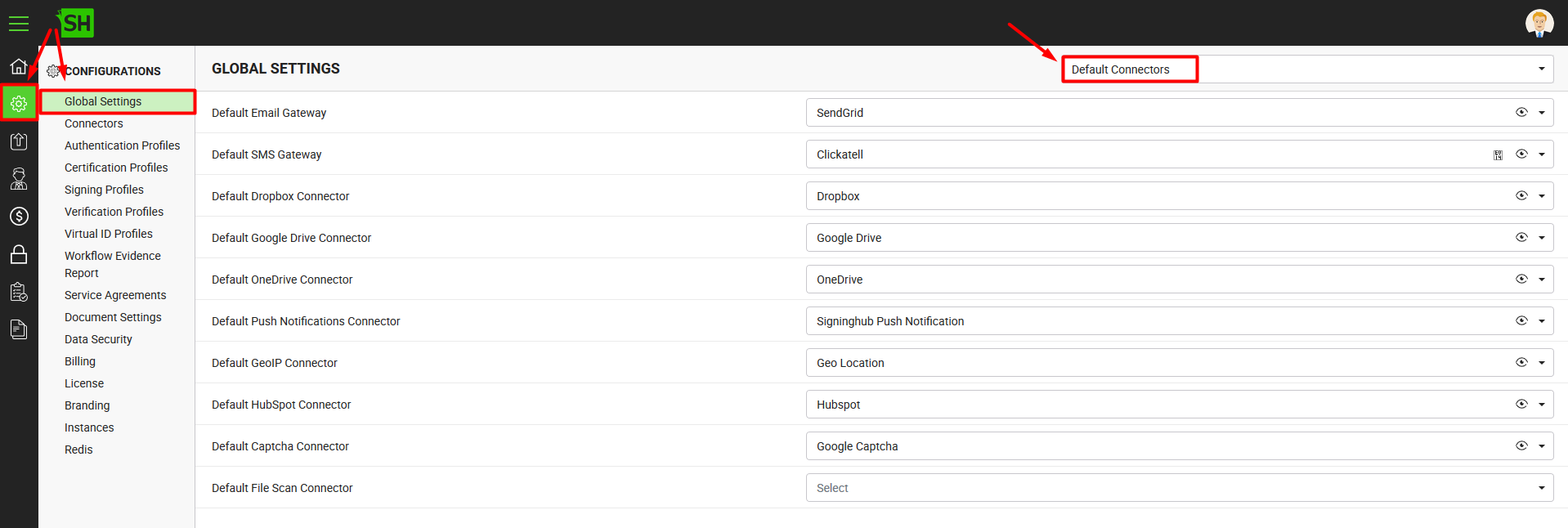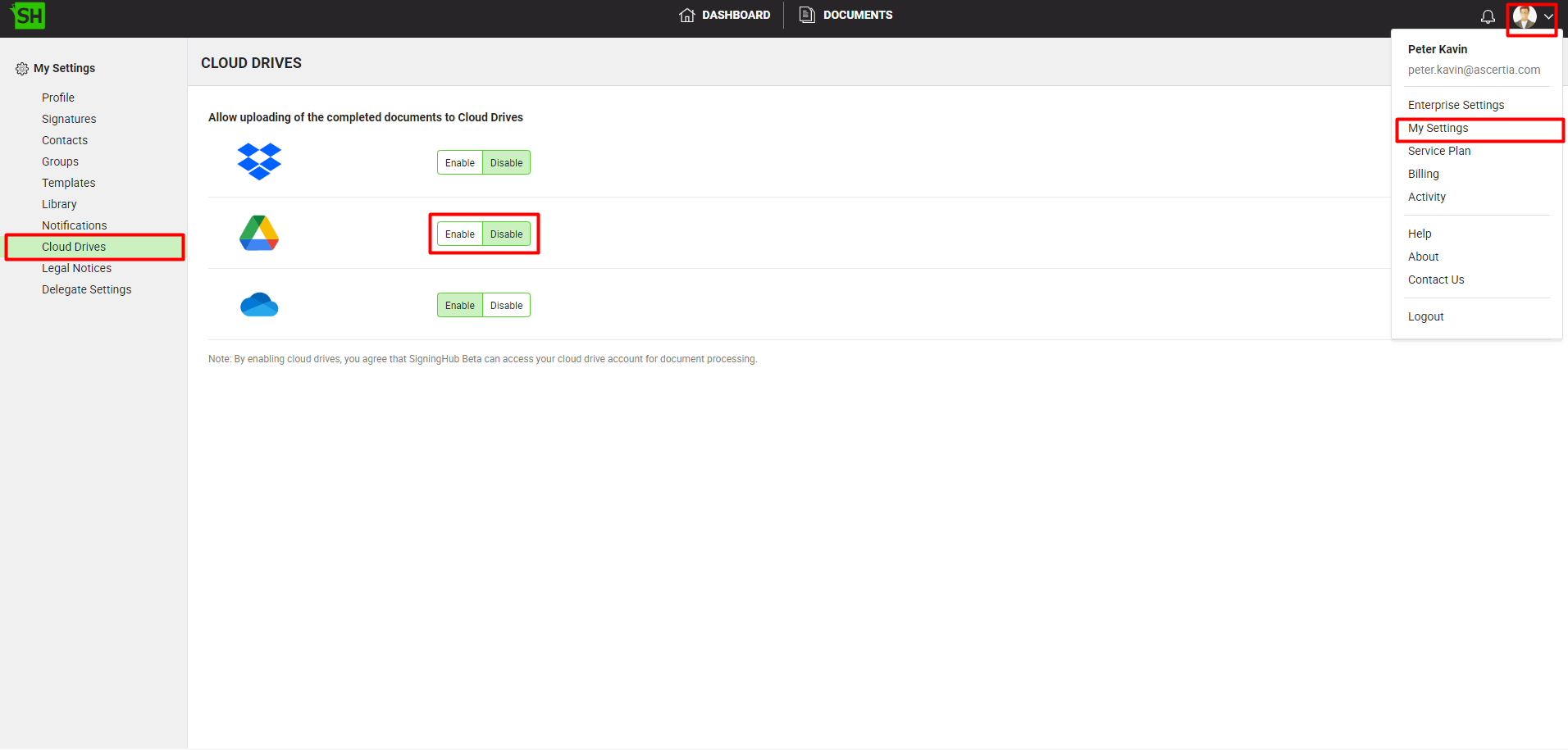How to Obtain the Google Drive Integration Key
A Google Drive connector can be configured in SigningHub Admin by providing the three integration keys i.e. Client ID, Client Secret, and API key.
Obtain the Google Drive Integration Key
- Browse https://console.developers.google.com to open the Google developer console.
- Log into your Gmail account.
- Click the "Select a project" drop down and select the "Create a project.." option.
- Specify your project name, i.e. "SigningHub Admin", agree to the terms of service and click the "Create" button.
- A new project will be created with the specified name.
- Click the "APIs" option from the left menu, and search "Google Picker API" in the search field. Once retrieved, click the API record to enable it.
- Click the "Enable API" to enable the Google Picker API.
- Similarly, search "Drive API" in the search field and enable it the same way Google Picker API was enabled.
- Now click the "Credentials" option from the left menu, then click the "Add Credentials" drop down and select the "OAuth 2.0 client ID" option.
- Specify the product name, i.e. SigningHub Admin, and click the "Save" button.
- Select the "Web application" option, and click the "Configure consent screen" button. Now specify the "Name" of your SigningHub Desktop Web as "SigningHub". The "Authorized JavaScript Origins" field is used to pull the documents from Google Drive. Specify the URL of your SigningHub Desktop Web here, e.g. "https://web.signinghub.com".
- The "Authorized redirect URIs" field is used to push the documents from your SigningHub Desktop Web to Google Drive. Specify the callback URL of your SigningHub Desktop Web here. For example if your SigningHub Desktop Web is "https://web.signinghub.com" then the callback URL will be "https://web.signinghub.com/OAuth/GoogleDriveCallBack". Click the "Create" button.
- The client ID and client secret of Google Drive are created and shown on the screen. Add these values in your Google Drive connector. Click OK to proceed further.
- The client ID and client secret of your web application is saved for future use.
- Now click the "Add credentials" drop down and select the "API key" option.
- Click the "Browser key" button.
- Specify the "Name" of your browser API, i.e. "browser key 1", and click the "Create" button.
- The API key of Google Drive is created and shown on the screen. Add it in your Google Drive connector. Click OK.
Create a OneDrive connector
- Access the SigningHub Admin portal.
- Click the "Configurations"section from the left menu.
- Click the "Connectors" tab. The "Connectors" screen will appear.
- Click
 from the grid header.
from the grid header.
- A dialog will appear to add the connector details. The connector dialog is comprised of two screens, i.e. Basic Information and Details. Specify the basic information and click the "Next" button to provide the respective connector details. See the below table for fields description.


- Click the "Finish" button. A new connector will be saved and displayed in the list.
|
Basic Information |
|
|
Fields |
Description |
|
Name |
Specify a unique name for this connector, i.e. My Google Drive. This connector will be used in the configuration of Global Settings. |
|
Provider |
Select the provider for this connector, i.e. "Google Drive". |
|
Purpose |
This field will display the purpose of the selected provider above, i.e. the purpose of "Google Drive" is "Cloud Drive". |
|
Active |
Tick this check box to make this connector active. Inactive connectors cannot be configured in the Global Settings. |
|
Details |
|
|
Fields |
Description |
|
Logo |
Select an appropriate image in the jpeg, jpg, gif or png format for the connector's logo that will be displayed on the login screen. |
|
Client ID |
Specify the registered client ID that has been provided by Google Drive during account configuration, e.g. "04586340-uc46ggb7obrikmapn0or2ubignrarrri.apps.googleusercontent.com". |
|
Client Secret |
Specify the client secret that has been provided by Google Drive during account configuration, e.g. "hniZYHqPEcKy6H25-LjzSX0Q". See details as how to get the client secret. |
|
App Key |
Specify the API key that has been provided by Google Drive ( during account configuration) to connect to the Google Drive server, e.g. "SyBmGnqiKFzM1P-JLemHgl4juCYGBXjylTU". See details as how to get the API key. |
|
Allow Multiple Files Selection |
Tick this check box to enable the end users to import multiple files from Google Drive. |
Configure the Google Drive Connector as Default in the SigningHub Global Settings
- Click the "Configurations" option from the left menu.
- Click the "Global Settings" option.
- Global Settings will appear, select the "Default Connectors" option from the top right drop down.
- Configure these settings as required and click the "Save" button from the screen bottom.
- Select the default Google Drive connector for SigningHub Desktop Web. The selected connector will be used to pull the Google Drive content (documents) directly into SigningHub Desktop Web. The Google Drive connectors are managed through the connectors section, see details.

Enable your cloud drives
- Access the SigningHub Web portal.
- Click your profile drop down menu (available at the top right corner).
- Click the "My Settings" option.
- Click the "Cloud Drives" option from the left menu.
- Click the "Enable" option against the Google Drive cloud drive.

- A pop-up will appear asking for the authentication of the cloud drive. Provide your credentials and click Login.
- Upon successful authentication, the cloud drive will be enabled, and will start appearing in the Post Processing screens.
- To pull document from Google Drive, go to “Start New Workflow” and click on the Google Drive icon to upload document.
- Document will be pushed to the Google Drive account (if post processing was set during workflow) that has been configured, once a workflow will be completed.
See Also
- How to Obtain the Azure AD Integration Key
- How to Obtain the Office 365 Integration Key
- How to Obtain a Salesforce Consumer Key
- How to Obtain the Dropbox Integration Key
- How to Obtain the OneDrive Integration Key
- How to Obtain the HubSpot Integration Key
